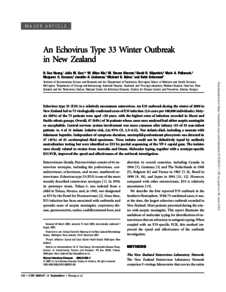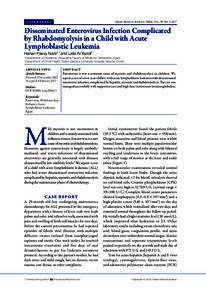Document
An echovirus type 33 winter outbreak in New Zealand.
Identifier
DOI: 10.1086/376915
Source
Clinical Infectious Diseases. v. 37, 5, p. 650-657
Contributors
Carr, Julia M. , Author
Nix ,Allan W. , Author
Oberste, Steven M. , Author
Kilpatrick, David R. , Author
Pallansch, Mark A. , Author
Croxson, Margaret. C. , Author
Lindeman, Jennifer A. , Author
Baker, Michael G. , Author
Grimwood, Keith., Author
Country
United States.
City
Virginia
Publisher
the Infectious Diseases Society of America
Gregorian
2003-09-01
Language
English
English abstract
Echovirus type 33 (E33) is a relatively uncommon enterovirus. An E33 outbreak during the winter of 2000 in New Zealand led to 75 virologically-confirmed cases of E33 infection (2.6 cases per 100,000 individuals). Sixty-six (88%) of the 75 patients were aged 30 years, with the highest rates of infection recorded in Maori and Pacific ethnic groups. Overall, 47 (84%) of 56 patients whose cases were analyzed had either aseptic raeningitis or encephalitis. Central nervous system involvement was more common after infancy (43 of 45 non-infant patients vs. 4 of 11 infants [relative risk, 2.6; 95% CI, 1.5-4.3]). Two infants died, including a neonate with fulminant hepatitis. Independent of symptom duration, neutrophil-predominant pleocytosis was detected in 17 (41%) of 41 cerebrospinal fluid specimens. Virus isolates could not be definitively typed by antibody neutralization testing but were identified as E33 by partial sequencing of the VP-1 capsid gene. The isolates were closely related to strains from Australia and Oman. Molecular typing, together with a serotype-specific E33 PCR, improved the speed and effectiveness of the outbreak investigation.
ISSN
1058-4838
Resource URL
Category
Journal articles


